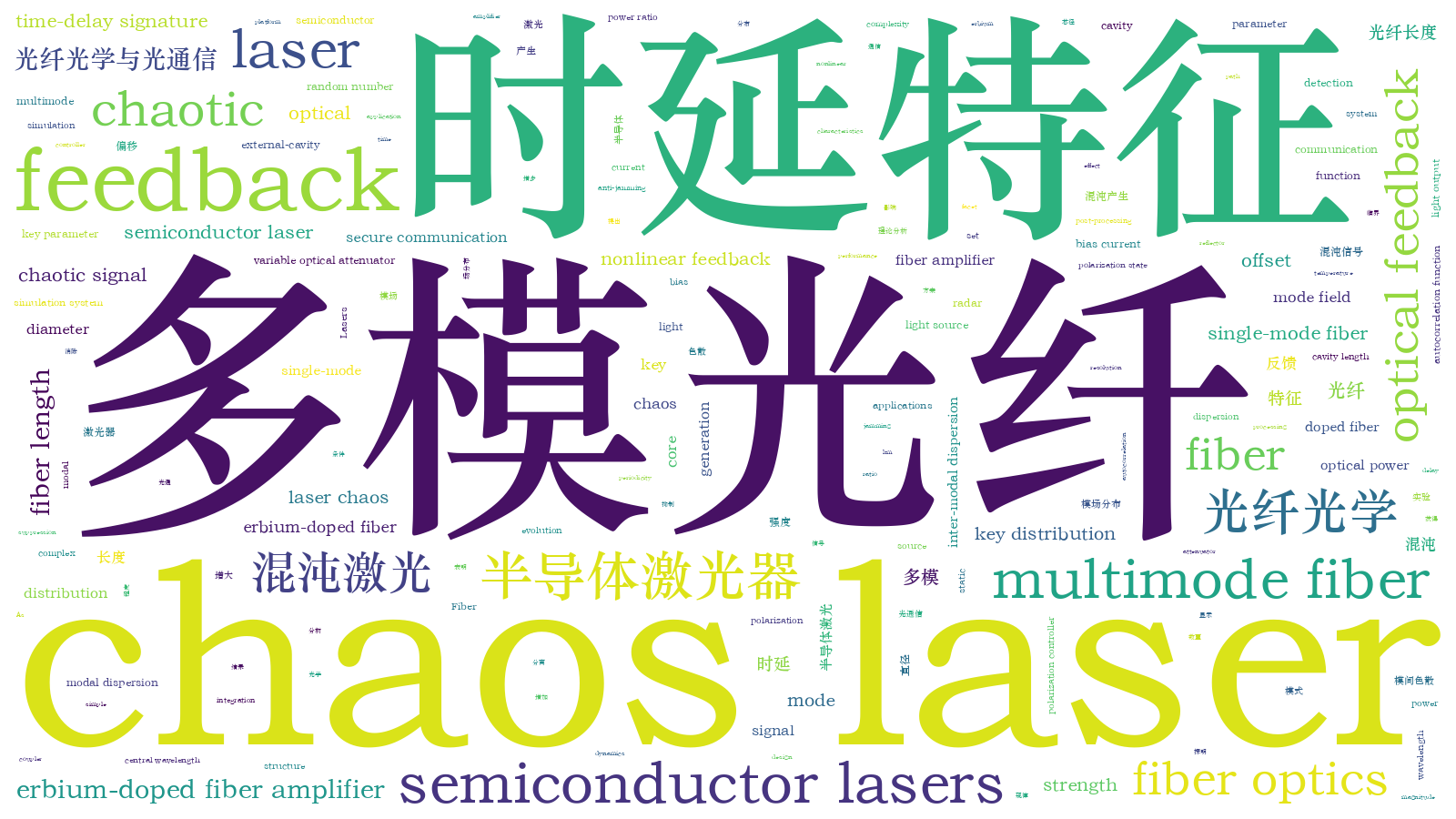多模光纤反馈半导体激光器产生无时延特征混沌【增强内容出版】
Chaos laser has important applications in the fields of secure communication, key distribution, physical random number generation, and radar. In these applications, the key is a chaotic source, a common choice for which is a semiconductor laser with optical feedback because it is characterized by simple structure, easy integration, and complex dynamics. However, external-cavity resonance between the laser facet and the reflector in the conventional optical feedback structure gives the chaotic signal an obvious time-delay signature (TDS). This feature leaks the key parameter of the external-cavity length of the chaotic light source, which makes the system at a risk of being reconstructed and reduces the security of chaotic secure communication and key distribution. In addition, a TDS also introduces a weak periodicity to the chaotic signal, which limits the randomness of physical random numbers and the anti-jamming performance and resolution of radar. Therefore, the suppression of the TDS is an important prerequisite for the best use of chaos laser. The main methods of suppressing the TDS are increasing the complexity of the feedback cavity, introducing nonlinear feedback, and post-processing the chaotic signal. In this study, a TDS-free chaos laser generation scheme using inter-modal dispersion of a multimode fiber (MMF) is proposed. This work provides a basis for the application of TDS-free chaos laser in the fields of secure communication, key distribution, physical random number generation, and radar detection.
The light output from a semiconductor laser is divided into two paths by an optical coupler. One path is fed back to the laser via the MMF to perturb itself to generate chaos, and the other one is for detection. We utilize a variable optical attenuator and a polarization controller to adjust the strength and polarization state of the feedback light. The feedback strength is defined as the power ratio of the feedback light to the static output of the laser. An erbium-doped fiber amplifier is used to amplify the signal's optical power in the feedback and detection paths. When the bias current and operation temperature are set to 15 mA and 25 ℃, respectively, the static wavelength of the laser is stabilized at 1550.1 nm. Numerically, we employ the VPIphotonics design platform to construct the simulation system mentioned above. In the simulation, the bias current of laser is set to 20 mA, giving rise to a central wavelength of 1552.52 nm. Two typical MMFs with core diameters of 50 μm and 62.5 μm are used to analyze the effects of the core diameter (D), relative offset, and length of the MMF on the chaotic optical mode field. In addition, the evolution of the TDS as a function of the relative offset, feedback strength, and length of the MMF is explored. Note that, to quantitatively characterize the magnitude of the TDS, the autocorrelation function is used.
First, a TDS-free chaotic signal is obtained experimentally using an MMF with a length of 4.4 km and a core diameter of 62.5 μm while the optical feedback strength is fixed at 0.1 (Fig. 2). Next, we theoretically study the influences of the core diameter (Fig. 3) and relative offset (Figs. 4 and 5) of the MMF on the number of modes and the distribution of chaotic optical mode fields. As the core diameter and relative offset increase, the number of modes gradually increases and the mode field distributions become more complex. The effect of fiber length on mode separation is also investigated (Fig. 6). Note that the degree of mode separation (that is, the inter-modal dispersion) becomes larger as the fiber length increases. By comparing the typical chaotic characteristics of a laser subject to single-mode fiber and MMF feedback under the same parameter conditions, we find that the approach with MMF feedback can afford the elimination of the TDS, whereas that with single-mode fiber feedback cannot (Fig. 7). Furthermore, the effects of relative offset (Fig. 8), fiber length (Fig. 9), and feedback strength (Fig. 10) on the TDS are given. When the relative offset is 0 and the feedback strength is 0.1, the critical fiber length required to eliminate the TDS can be as short as 1 km.
In this study, we propose a scheme for TDS-free chaos laser generation using a semiconductor laser with MMF feedback. Chaos laser without the TDS is obtained experimentally. Theoretically, the effects of the core diameter, relative offset, and fiber length of MMFs with D=50 μm and D=62.5 μm on the chaotic optical mode field are analyzed. Furthermore, we explore the TDS evolution as a function of the relative offset, fiber length, and feedback strength. Finally, the parameter conditions required to suppress the TDS of chaotic signals are ascertained: When the relative offset is 0, the fiber length is greater than or equal to 1 km, and the feedback strength is greater than or equal to 0.1, chaotic signals without a TDS can be generated. This study underlies secure communication, key distribution, physical random number generation, and radar detection using TDS-free laser chaos.
蔺玉雪, 高慧, 王龙生, 李腾龙, 赵彤, 常朋发, 王安帮, 王云才. 多模光纤反馈半导体激光器产生无时延特征混沌[J]. 中国激光, 2024, 51(6): 0606002. Yuxue Lin, Hui Gao, Longsheng Wang, Tenglong Li, Tong Zhao, Pengfa Chang, Anbang Wang, Yuncai Wang. Time-Delay Signature Elimination of Chaos in Semiconductor Lasers with Multimode Fiber Feedback[J]. Chinese Journal of Lasers, 2024, 51(6): 0606002.







